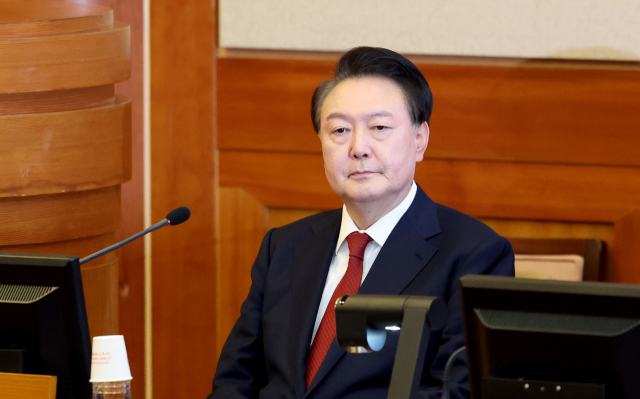[송현칼럼] '완벽한 착륙'에 대한 논의
데이비드 전 디스커버리캐피털 회장
글로벌시장은 다시 행복해졌다. 리스크 선호 심리는 점점 줄어들었고 시장은 상승 궤도에 올라섰다. 증시도 상승세고 채권수익률은 하향세다. 이런 상황은 인플레이션 우려가 더 이상 존재하지 않는 것처럼 보일 뿐만 아니라 세계 경제의 성장 위험이 사라진 것처럼 보인다. 연착륙을 넘어 ‘완벽한 착륙(Perfect Landing)’ 시나리오가 설득력을 얻고 있으며 전세계의 모험가들은 용기백배한 상황이다. 그런데 왜 나는 걱정이 되는 것일까.
단순하게 보자면 세계의 거시경제 균형을 좌우하는 요소들은 훌륭하게 조화를 이루고 있어서 작은 충격에도 그 조화가 쉽사리 깨질 수 있다. 쉽게 말하자면 세계 경제의 리스크는 더욱 높아진 셈이다.
이 주제를 더 파고들기 위해 우리는 순환적인 요소와 구조적인 요소를 분리해서 생각할 필요가 있다. 순환적인 부분은 통화ㆍ재정정책이 다스리는 보통의 비즈니스 사이클이고, 구조적인 사이클은 세계 경제 성장 재료들의 중요한 변환을 의미한다. 이것들은 엄청난 토론거리들이다. 내 계획은 우선 이 두 가지 사이클을 움직이는 변수들을 규명한 다음 장기적인 거시경제와 시장의 숨어 있는 의미를 더 잘 이해하기 위한 논의에 착수하는 것이다.
현재 거시경제 상황에서 고전적인 의미의 순환적인 경제 요소는 통화정책으로 설명될 수 있다. 몇 년 전만 해도 파국으로 여겨졌던 글로벌 디플레이션 가능성으로 인해 각국 중앙은행들이 공격적인 금리 인하에 뛰어들었다.
이는 유례없는 글로벌 유동성을 창출해냈다. 미국 연방준비제도이사회(FRB)가 기준금리를 4.25% 올린 뒤에도 거대한 유동성 규모는 줄지 않았고 세계의 리스크 선호 심리도 충분하다. 제한된 금융상품에도 터무니없는 돈이 흘러들어간다. 이러한 경향은 시장의 감성을 긴축적인 통화 상황의 순환적인 충격으로부터 분리했다.
이것은 시장의 혼란을 부추기는 한 요소이다. 거시적인 리스크들은 아직 시장이 “문제없다”고 말하게끔 한다. 이런 상황이 심화할 경우 시장 참여자들은 보통 시장 행위를 뒷받침할 만한 펀더멘털적인 요소를 따라가게 된다. 한 가지 예를 들자면 최근 시장은 미국의 부동산경기 침체나 근원 인플레이션 상승 등에서 찾을 수 있는 부정적인 펀더멘털 요소를 무시하고 있다.
미국 부동산경기 침체의 속도와 범위는 많은 관심을 끄는 요소였다. 그러나 시장은 이것이 미국 소비자들에게 충격을 주지 않으리라는 것에 베팅하고 있고 근원 인플레이션 상승도 유가가 하락세이기 때문에 걱정할 필요가 없다고 여긴다. 완벽한 경기 연착륙 시나리오에 기대를 거는 행위는 리스크를 좇는 초과 유동성에 의해 움직이고 있다. 경제 성장과 인플레이션이 모두 죽었다는 가정을 도출하자는 것은 아니다. 이러한 결론은 너무 성급하다.
세계 경제의 밑그림을 차지하는 구조적인 사이클 요소는 현재의 비즈니스 사이클을 보다 흥미롭게 만들고, 분석에 도전하고픈 욕구를 불러일으킨다. 거대한 개발도상국들이 신중산층을 쏟아내는 동안 근본적인 변화가 글로벌 경제 지도 위에서 벌어지고 있다. 이머징마켓에서 새롭게 만들어진 부는 미국의 성장을 떠받치는 자금의 주춧돌 역할을 한다.
비록 이러한 경향에 아무런 문제점이 없다고 해도 글로벌 불균형을 상승시키는 순환적인 특색을 만들어내고 있다. 미국 상품들에 대한 외국인 구매는 지난 10년 동안 한달에 100억달러 미만에서 700억달러 규모로 급증했다. 이것은 미국 소비자들이 보다 싼 차입 비용 혜택을 누릴 수 있게 했고 달러화 강세로 인해 보다 많은 상품과 서비스를 구매할 수 있도록 했다.
아시아와 중동에서 새로 탄생한 부유층은 달러화 자산을 보다 많이, 지속적으로 사들이고 있다. 이에 따라 미국 경제는 보다 많은 상품을 소비하는 구조를 유지할 수 있게 됐다. 이것은 미국 경제와 시장이 금리 동결에 대해 침묵하고 싶은 감정을 설명해주는 것이다. 글로벌 경제에 대한 가장 큰 걱정거리는 미국 경제가 어떻게 하면 성장의 동력이 된 자금 차입 비용의 하락에서 독립하는가 하는 문제이다. 이것은 계속 유지될 수 있는 상황이 아니다.
달리 말하면 선진국에서 개도국으로의 자금 이동은 글로벌 경제에는 긍정적인 소식이다. 그러나 만약 미 달러화 자산의 리스크 가격이 인위적으로 낮게 책정돼 있다면 이머징마켓의 저금은 가치 하락이 불가피하다. 즉 이머징마켓의 신중산층은 미국의 자체적인 발전을 위해 보조금을 지불해주고 있는 것이다. 그들은 양쪽의 리스크를 떠안고 있는 상황이다.
현재의 비즈니스 사이클은 정상이 아니다. 구조적인 사이클의 특징 하나는 통화정책에 화답하는 경제와 시장이 왜곡돼 있다는 점이다. 완벽한 착륙 시나리오는 소망할 수는 있지만 실현되리라고 예측해서는 안되는 것이다. 초과 유동성은 시장이 완벽한 착륙 시나리오의 엄청난 가격을 치르도록 강요하고 있다. 이것이 걱정스러운 점이다.
Debating the Perfect Landing
Global markets are happy once again. Risk appetite is once again creeping back and the markets are back on the rising trend. Equities are up and bond yields are down. It looks like the inflation concerns are no longer there and the global growth scare has faded. The perfect landing scenario is getting priced in to markets and the risk takers around the world are feeling brave again. Then, why am I worried?
In a very simplistic way, the factors maintaining the global macroeconomic balance are so finely tuned that the balance itself can quickly destabilize on a modest shock. To put this in a plain language, the risks in the global economy is much higher than the market is currently pricing in. To discuss this topic further, we need to separate out cyclical and structural factors. The cyclical part is the normal business cycle that monetary and fiscal policies govern, and the structural part of the cycle has to with major shifts in global growth sources. These are big topics to discuss. My plan is to first identify the variables driving these two cycles and engage in a discussion to better understand the long-term macroeconomic and market implications.
The classical cyclical aspect of the current macroeconomic environment can be explained by the monetary policy. With the global deflation scare as a catalyst a few years back, the central banks around the world engaged in an aggressive interest rate cuts. This created a global pool of money that we have never seen before. This liquidity is so large that even after the US Fed raised interest rates by 425 basis points over the past two year period, we find ample risk appetite around the world. There is too much money chasing after limited financial products. This can disconnect the market sentiment from cyclical impact of a tighter-than-before monetary condition. This is one source of confusion for the markets. The macro risks are there yet the markets are saying "no problem". When this type of situation emerges, the market people usually come up with fundamental reasons to support the market behavior. One example today is how the market is discounting the negative fundamental factors can be found in the housing sector in the US and rising core inflation. The pace and magnitude of the recent slowdown in the housing sector in the US has grabbed much attention. Yet, the markets are betting that this will not hurt the US consumers, and the rising core inflation is not a worry because the oil prices are coming down. The behavior of pricing in the perfect landing scenario is driven by excess liquidity chasing risk. We shouldn't make an implied assumption that both growth and inflation is dead. I think it is too early to make this conclusion.
The structural cycle element to the global picture makes the current business cycle much more interesting and challenging to analyze. The profound changes are taking place on the global economic map as the large developing economies create a massive new middle class. This newly created wealth in emerging economies is financing leverage driven growth in the US. Although there is nothing wrong with this development, the circular nature of this up can escalates imbalances. The net foreign purchase of the US market products have grown from less than $10 billion per month 10 years ago to averaging over $70 billion per month recently. This development is allowing the US consumers to enjoy a "cheaper-than-fair" cost of borrowing and a stronger exchange rate to consume tradable goods and services.
The new wealth from Asia and the Middle East continues to buy dollar assets in an escalating amount. In return, the US economy continues to consume more as it takes advantage of cheap financing and strong US dollar. This is one of the reasons why the sensitivity of the US economy and markets to the interest rate tightening has been muted. The biggest worry that I have about the global economy is how the US economy is becoming dependent on the artificially low cost of capital to create growth. This is not a sustainable condition.
In a way, the shift in wealth creation from the developed countries to emerging countries is a very positive news for the global economy. As the baby-boomer generation of developed countries goes into a savings consumption mode, we now have a massive new middle class creation taking place in emerging markets who are engaged in a saving and wealth creation activity. This is a good development. However, if the price of risk is artificially low in the US dollar based assets, the newly minted savers will need to take a haircut on their savings. In a way, the savers in emerging economies are subsidizing two things—demand in the US and their own growth. It is very ironic that they own the risk on both fronts and they are the ones lending the money.
One conclusion I draw is that current business cycle is not normal. The structural cycle is one element of global picture that is distorting classical economic and market responses to monetary policy. Given this, one can hope but should not expect a perfect landing scenario. The power of excess liquidity is forcing markets to increasingly price a perfect landing scenario. This is why I worry.
입력시간 : 2006/10/22 16:56










